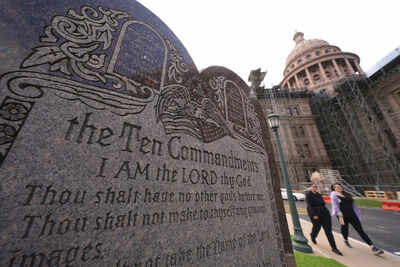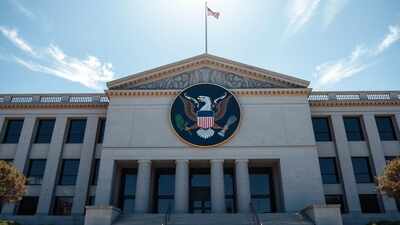
Texas’s bid to require the Ten Commandments in every public school classroom has collided with constitutional resistance. In a meticulously reasoned and pointedly critical opinion, US District Judge Fred Biery issued a temporary injunction, asserting that the measure almost certainly runs afoul of the First Amendment’s guarantees. The ruling not only halts the law’s implementation but also situates Texas within a widening national pattern, joining Louisiana and Arkansas, where comparable statutes have already been struck down. Together, these judicial rebukes underscore a growing legal consensus that attempts to fuse state authority with religious symbolism risk undermining the very principle of church-state separation.
The Constitutional dilemma
At the heart of the case lies a central question: Where does the line fall between historical recognition of religion and unconstitutional endorsement of it? Judge Biery’s decision pointedly highlighted the “captive audience” of schoolchildren, arguing that even passive displays may compel teachers to explain, thereby straying into religious instruction. The judgment underscores how public education, unlike legislative halls or civic monuments, demands a heightened sensitivity to religious neutrality.
Families and faith leaders are at the forefront
The case was brought forward by Dallas-area families and religious leaders who argued that the law infringes on both the separation of church and state and the individual right to free religious exercise. For them, state-mandated religious texts inside classrooms amount to coercion disguised as tradition. Their success in securing a preliminary injunction represents a significant, albeit temporary, victory for civil liberties advocates.
Texas and the larger national movement
Texas, the largest state yet to attempt such a requirement, is not operating in isolation. Louisiana became the first state to enforce such a mandate, only to see it struck down by a federal appeals court in June. Arkansas faced similar judicial resistance when a judge ruled against classroom postings in four districts. These converging cases suggest that the US Supreme Court may soon be forced to weigh in, setting a national precedent on whether such displays are constitutional.
Tradition vs. secularism: The broader debate
Supporters of the Texas law argue that the Ten Commandments form part of the country’s moral and legal foundations, citing their historical influence on American jurisprudence. They point to existing monuments, including one on the Texas Capitol grounds, upheld by the Supreme Court in 2005. Critics, however, insist that the classroom is a fundamentally different arena, one where impressionable students must not be subjected to religious preference under the guise of heritage.
A battle far from resolution
While the ruling is a decisive moment for civil liberties groups, it also sets the stage for a prolonged legal fight. Conservative advocates remain confident that higher courts, perhaps even the Supreme Court, will ultimately endorse their view that the commandments represent cultural and historical value rather than religious instruction.What lies aheadThe unfolding legal drama illustrates the broader tension between America’s religious roots and its constitutional safeguards. Whether the Ten Commandments belong in civic spaces, classrooms, or neither is no longer a state-level issue; it is rapidly becoming a national debate about the balance between faith and public education.







